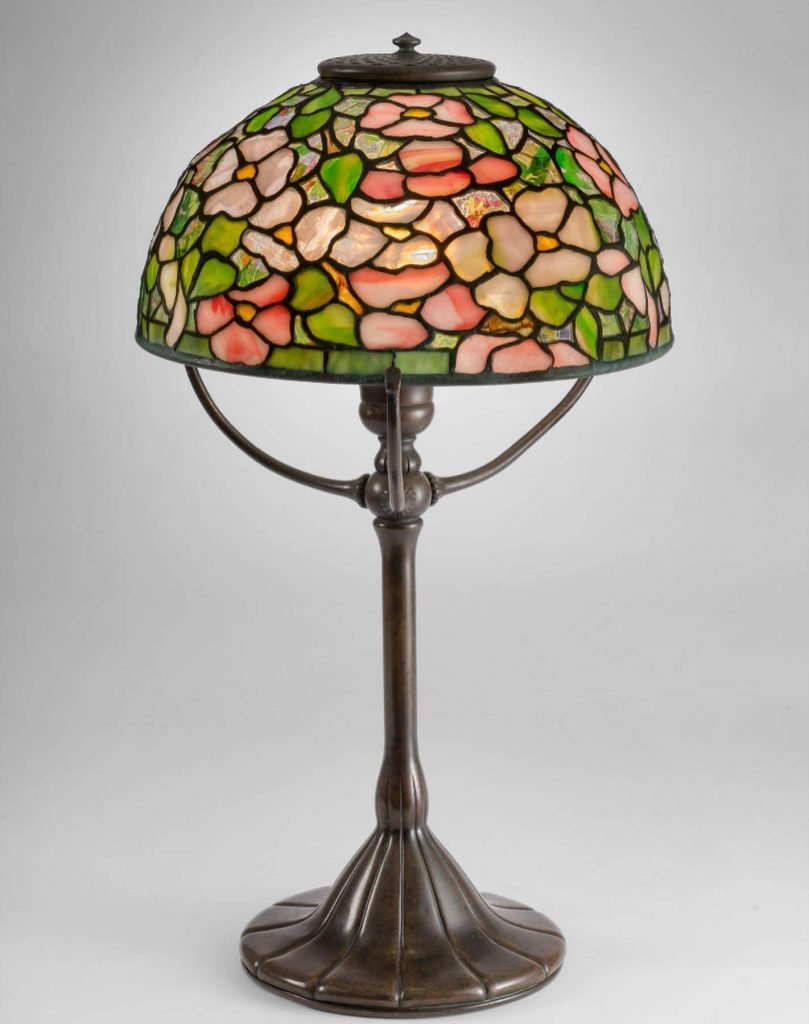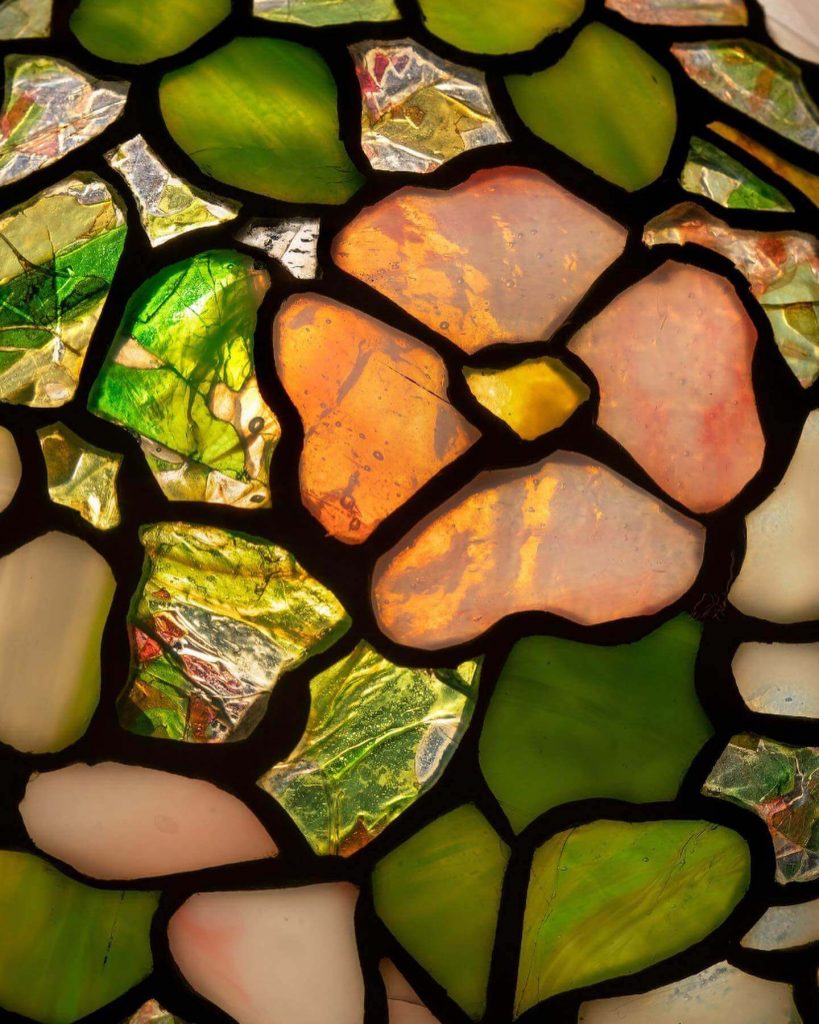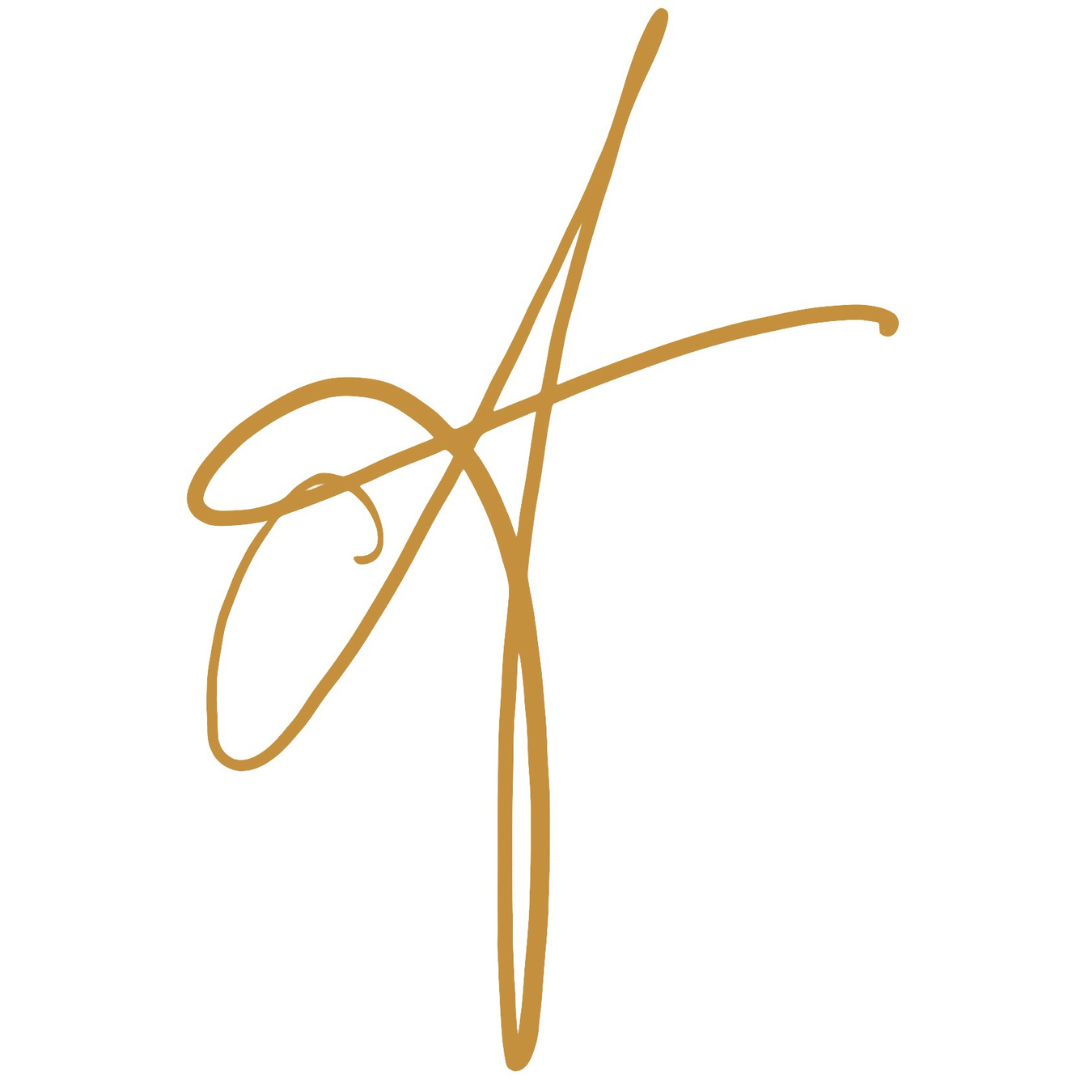

12-inch Dogwood Tiffany lamp mold
In shape, the globes are much more complex than the cones. Instead of being curved in only one direction -the horizontal – the shades in this category are curved in both the horizontal and vertical planes. Aesthetically, this produces a more pleasing shape. It is also superior from the artistic standpoint since the globular surface permits a more natural rendering of three-dimensional objects like trees and flowers. Technically, greater craftsmanship is required to produce a globe since it is more difficult to lead flat pieces of glass in such a way as to form a surface that curves in two directions.

Tiffany lamps in cones and globes
On the other hand, the proper placement of globes in a room is a much easier matter than the disposition of cones. Since the surface of a globe has a considerable vertical component, the design of the shade, especially its lower aspect, can be more readily seen from the side.

Small Dogwood Table Lamp, a Tiffany Studios lamp in The Neustadt Collection
This lamp and base constitute an integrated unit because the unusually small 12″ leaded shade (the smallest shown in this book) fits the equally unusual 12″ circumferential rim of the base, which rests on four arms. The shade is 54″ high and has a 3½” aperture, which is not designed to fit an aperture ring; it is signed.

A darker pink, almost red, on the outer edges of the dogwood petals
An overall pattern of pink-and-white dogwood blossoms covers the globe. These blooms exhibit the scalloped edges typical of dogwood petals; extraordinary craftsmanship is evident in how a darker pink, almost red, appears on their outer edges. Dark green leaves with yellow striations are seen between the flowers. The background, of ornate fractured glass, is milky-transparent and contains orange, red and green slivers. The shade has neither a bottom nor an aperture row.
